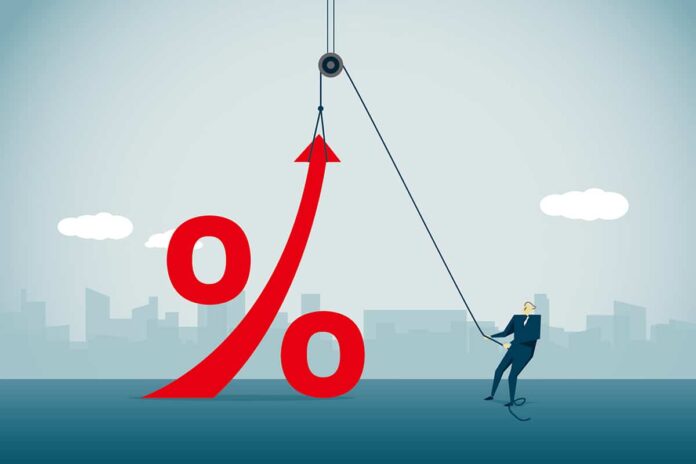Interest rates have a significant impact on various aspects of the economy and can affect everything from inflation to investments. In this article, we will explore the different areas where interest rates play a crucial role and discuss their implications.
How do interest rates affect the economy?
Interest rates have a direct impact on inflation, which is the general increase in prices over time. When interest rates are higher, borrowing becomes more expensive, resulting in reduced consumer spending. This decrease in spending helps control demand and lowers inflationary pressures.
The Federal Reserve, the central bank of the United States, plays a vital role in setting interest rates. By adjusting the federal funds rate, the rate at which banks lend to each other, the Federal Reserve influences borrowing costs across the economy. Rate hikes by the Federal Reserve can signal an effort to curb inflation or tighten monetary policy.
When interest rates rise, investments can be affected. Higher interest rates increase the cost of borrowing for businesses, making it more expensive to finance projects or expand operations. This can lead to reduced investment levels and consequently slower economic growth.
What are the effects of rising interest rates?
Rising interest rates impact mortgage rates, making homeownership more expensive. When rates rise, mortgage lenders increase the interest rates they charge on home loans. This directly affects the affordability of housing and can lead to a decline in the demand for homes. Additionally, higher mortgage rates can result in higher monthly payments for existing homeowners who have adjustable-rate mortgages.
Rate hikes by the Federal Reserve can also affect consumer spending. When interest rates rise, borrowing becomes more costly for consumers. This includes borrowing for big-ticket items such as cars and appliances, as well as credit card debt. Higher borrowing costs can deter consumers from making purchases, potentially leading to a slowdown in consumer spending.
The stock market is also sensitive to changes in interest rates. Rising interest rates make fixed-income investments like bonds more attractive compared to stocks. This shift in investor preference can lead to a decrease in demand for stocks, resulting in a decline in stock prices.
Why does the Federal Reserve raise interest rates?
The Federal Reserve raises interest rates to achieve specific objectives. These objectives can include controlling inflation, stabilizing the economy, and promoting sustainable economic growth. By increasing interest rates, the Federal Reserve aims to moderate borrowing and maintain a stable economic environment.
Rate hikes by the Federal Reserve also impact borrowing costs for businesses and consumers. Higher interest rates mean businesses pay more to borrow money, which can affect their profitability and growth plans. Consumers face increased interest rates on credit cards and loans, resulting in higher monthly payments and potentially impacting their ability to make purchases.
Rate hikes by the Federal Reserve can also affect the stock and bond markets. When the Federal Reserve raises interest rates, it can create uncertainties and lead investors to reevaluate their investment strategies. This can result in increased volatility in the markets and potentially impact stock and bond prices.
What are the implications of falling interest rates?
Falling interest rates can have significant implications, particularly on mortgage rates. When interest rates decline, mortgage rates also decrease. This makes homeownership more affordable, leading to increased demand for homes. Lower mortgage rates can also motivate existing homeowners to refinance their mortgages, potentially resulting in lower monthly payments.
Lower interest rates stimulate borrowing and investment. Reduced borrowing costs make it cheaper for businesses to finance expansion and investment projects. This can lead to increased business activity and economic growth. Lower interest rates also encourage consumers to borrow and spend, boosting overall economic activity.
Falling interest rates can impact stock prices. Lower interest rates make stocks more attractive compared to fixed-income investments like bonds. Investors may shift their focus towards stocks, which can increase demand and drive up stock prices.
How can interest rate changes affect the average consumer?
Interest rate increases can directly impact credit card and loan interest rates for the average consumer. When interest rates rise, banks and lenders may increase their lending rates, resulting in higher interest charges for consumers. This can make it more expensive to carry credit card balances or take out loans.
Lower interest rates can benefit homeowners by reducing their mortgage payments. When interest rates decrease, homeowners with adjustable-rate mortgages may experience a decrease in their monthly payments, providing them with increased financial flexibility.
Changes in interest rates can also influence the borrowing decisions of average consumers. Higher interest rates make borrowing more expensive, leading to increased borrowing costs for individuals. This can impact personal finance decisions such as taking out loans for education, purchasing vehicles, or financing other major expenses.
